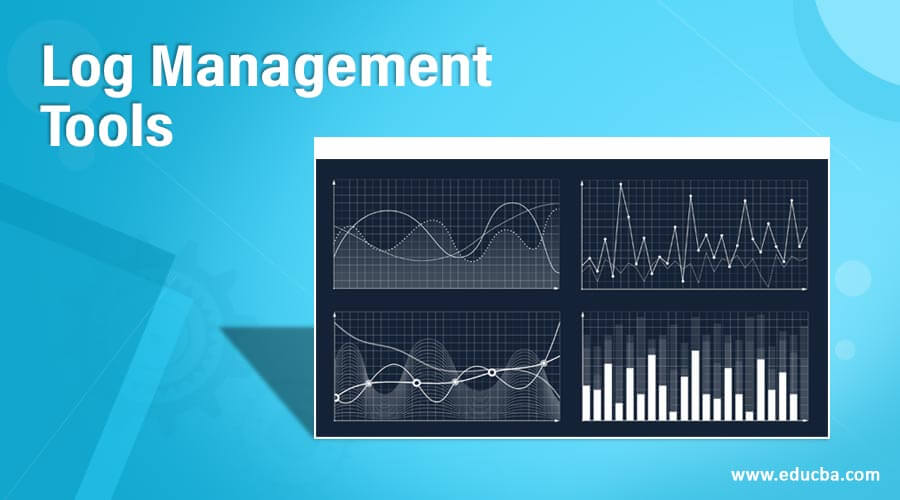Updated June 13, 2023

Introduction to Log Management Tools
The following article provides an outline of log management tools. Logs are not easy to deal with, but an important aspect of any production method is nevertheless significant. If you have a difficult problem, using a log management tool is much better than running text files into endless loops through your device network. The great benefit of log management is that it allows you to determine the root cause of any application or software error in a single question.
The same applies to security issues, where many of the methods below will help the IT team deter attacks before they occur. Another consideration is a visual overview of your users’ global applications – bringing this vital information on one dashboard would significantly improve your productivity. Finally, review your current business process when you select the best log management method for your needs. Decide if you are still a small business trying to delete the basic details from your logs or intend to reach the company stage-which would take a more effective logging system and production management software.
List of Log Management Tools
Here is a list of some Log Management Tools:
1. Splunk
Splunk offers a few products: Business, Cloud, Hunk, and Light. Splunk Enterprise allows you to obtain useful tactical information from data produced by your computer. And any user can easily discover and share experiences with a wide variety of efficient searches, displays, and prepackaged material for case users. Splunk also offers specialized charts and dashboards and a pivot interface that allows the dragging and falling of visual files.
2. LogRhythm
LogRhythm is a different method for log management and event management. This means that two different tools are purchased and managed. At the same time, LogRhythm integrates both into one centrally integrated framework to enhance log management and log analysis, event management, and reporting. Nevertheless, LogRhythm also offers a Network Server installation handler. The agent gathers and sends log data to the log manager of the device. It provides Structured logging so developers can log objects and search by properties.
3. Logscape
Logscape is an Enterprise ready-to-use large-scale analytics platform designed to view machine data over time series. If your systems create data or remove it from an external source, you can easily check, filter, and display any data generated by a computer on Interactive Dashboards.
4. Fluentd
Fluentd is an open-source data collector that enables data collection and processing to be combined with being used and a better understanding of data. The success of Fluentd in this field has been proved — its largest user now collects logs from 5000 + servers, 5 TB of daily data, and handles 50,000 messages/sec during the high time. So yeah, efficiency is the main reason it is used. Moreover, Fluentd has a versatile plugin framework that enables the community to grow.
5. Graylog
Graylog is an open-source program claiming to execute Splunk functions. Graylog is written in Java and the Ruby-on-rails web interface. Graylog can not read directly from Syslog files; instead, sending your messages directly to Graylog is less convenient. However, as in Splunk and with similar Search Functions, you can search for your results.
6. Scalyr
Scalyr is an ex-Google engineer who developed a server monitoring tool. It combines log data, device metrics, website surveillance, and worrying. It simply doesn’t take much room. You have to have this knowledge in one place. The odd thing is that the control modules are also being brought in. The logs and the gloss over the other aspects of application control are other log management methods.
7. Papertrail
Papertrail can add text log files and Syslog info. The web interface provides versatile team-wide access. You can easily enable Papertrail in 45 seconds, spread it on many servers, and clean it easily. Sadly, their free plan is just 100MB / month relative to other rivals.
8. Retrace
Retrace is a popular tool for Log monitoring and alerting. It supports logging frameworks such as NLog, log4net, log back, log4j, etc. In addition, it provides Full-text searching and Logs tailing.
Use this suite of main tools that all developers need, including logging, error tracking, and code-level performance, resetting your code, finding bugs, or boosting application performance.
Conclusion
These are all common tools and resources. Some solutions are part of a wider SIEM network that offers even more sophisticated analysis, long-term storage, and data protection. In contrast, others can be used as individual devices with any SIEM solution. You may choose the best log management system depending on your company’s requirements.
Recommended Articles
This is a guide to Log Management Tools. Here we discuss the introduction and list of Log Management Tools. You may also have a look at the following articles to learn more –


